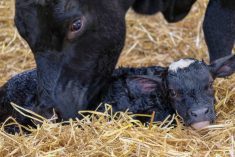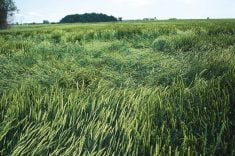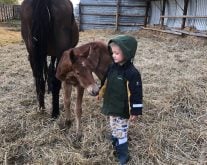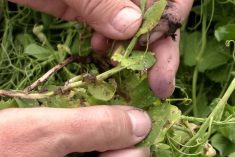A few years back, there was a surge of investment in pea processing for the plant-based protein industry. A multimillion-dollar plant was built in Manitoba, along with other smaller related food and processing businesses.
There was more than just talk about growing more peas in Western Canada in which an offshoot would be feeding more field peas and pea byproducts to livestock. Now it seems nearly everything in that market segment is at a standstill, with a few bankruptcies along the way. Yet as a dairy nutritionist, I want to revisit the feeding of peas to lactating dairy cows, which means determining the crop’s local availability as well as nutrition and economic viability.
Geographic variability
Read Also
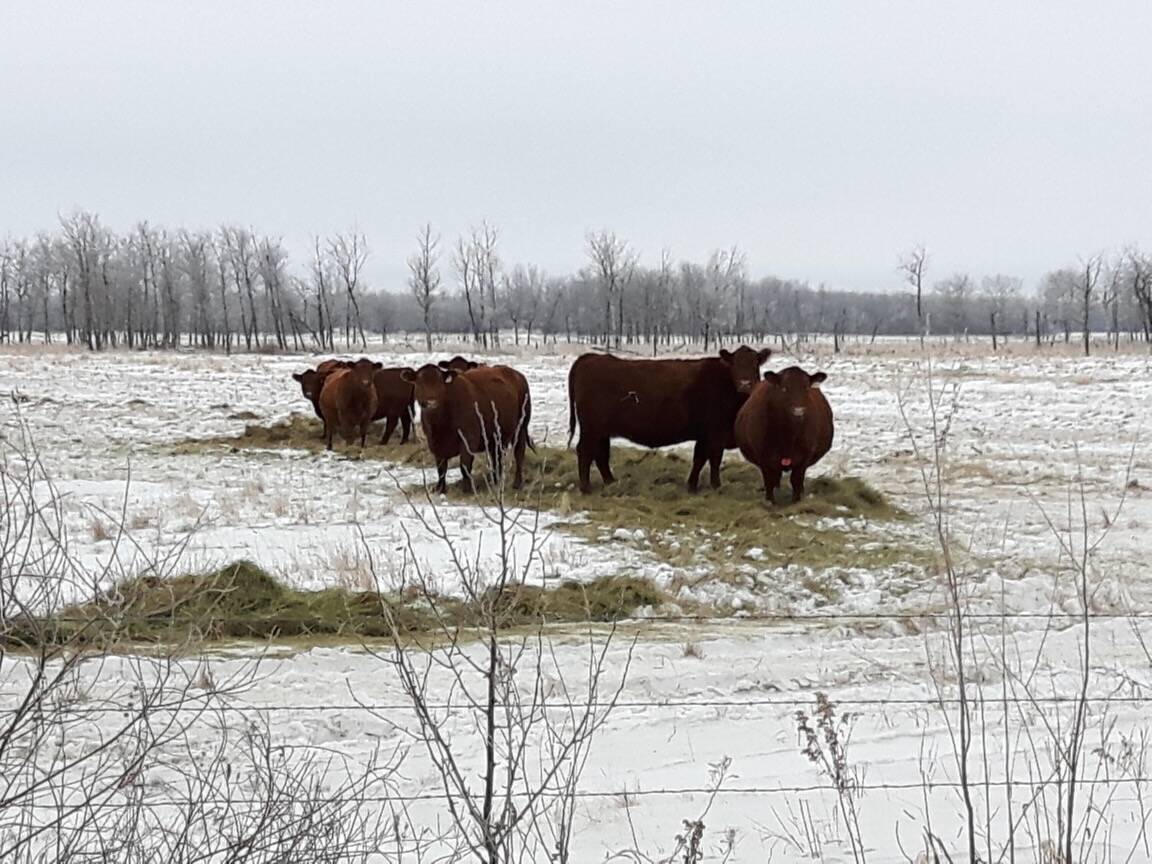
Prevent nitrate poisoning in overwintering beef cows
High-nitrate feeds can be deadly for overwintering beef cows. They can be used, but only if they’re processed and diluted in a lower nitrate ration.
Field peas are not grown as much in the eastern Prairies compared to the more western provinces. Although there was a bit of an uptick in its acres a few years ago, Manitoba grew only about 160,000 acres of field peas in 2023, compared to about 1.5 million acres of soybeans. Saskatchewan and Alberta sowed in the opposite way: 1.6 million and 1.3 million acres of peas, compared to only 68,000 and 6,500 soy acres, respectively.
Such geographic disparity does not dissuade me from investigating the nutritional value of field peas for dairy cows. Like corn or barley, peas can be fed to high-milk producing dairy cattle as a good dietary energy source. It derives its megacalories (Mcal) from highly available and readily digestible starch, which drives consistent milk production. For example, a routine laboratory analysis reveals peas contain 52 per cent starch compared to 72 per cent starch found in corn, and 60 per cent starch cited in barley grain. Non-fibre carbohydrate (NFC) levels are about 64 per cent versus 65 per cent in barley and 75 per cent in grain corn. As a result of these starch and NFC values, the NEL (net energy of lactation) of peas yields a good 2.02 Mcal/kg.
Peas are also a good source of dietary protein for dairy cows. Unlike the above-mentioned grains, field peas have a higher content of about 22-24 per cent crude protein. This is about half the value of soybean meal (47 per cent) and canola meal (36 per cent) and slightly lower than corn distillers’ grains (28 per cent). Pea protein is highly degraded in the rumen like soybean meal and often has to be balanced with highly bypass (that is, undegradable) protein ingredients, such as DDGS, if it is formulated in dairy lactation diets.
Substitution
In the table shown here, I formulated a typical corn silage-based diet for lactating dairy cows milking about 40 kg milk, 4.3 per cent milkfat at 150 days-in-milk. Barley was used as the primary energy concentrate source, while a combination of soybean meal, canola meal and DDGS achieved total/bypass protein requirements of these lactating dairy cows.
| Feedstuff | Amount per cow (kg) |
| Corn silage | 28.0 |
| Alfalfa hay | 5.5 |
| Grass hay | 1.0 |
| Barley | 5.0 |
| Peas | 1.0 |
| Soybean meal | 1.5 |
| Canola meal | 0.5 |
| DDGS | 1.5 |
| Dairy premix | 0.5 |
| Bypass fat | 0.5 |
| Water | 2.0 |
| Total | 47.0 |
One kilo of peas easily replaced a half kilo of barley and half kilo of soybean meal, with no significant adjustment made to the other feed ingredients such as DDGS (bypass protein).
As a result, I would expect the same milk or milkfat yields, similar to animal science research testing peas as a replacement for corn/soybean meal in dairy diets.
Similarly, I found out by adding one kg of peas for 0.5 kg of barley and 0.5 kg of soybean meal didn’t significantly change the average cost of feeding a typical lactating dairy cow. My control diet cost $9.80 per cow compared to $9.84 per cow fed peas. Note: I priced in barley at about $5.50 per bushel, soybean meal at $590 per tonne and peas at $10.50 per bushel. I encourage any dairy producer to use their own on-farm prices to determine such diets possibly used at their dairy farm.
A friend milks 165 dairy lactating cows and harvests about 1,500 acres of field peas each year. A few years ago, he followed an exercise similar to mine, adding about two kg of ground peas, and substituted out soybean meal and hammered corn and barley.
As a result, he found it took these milking cows a few days to get used to the peas in their TMR, as well as one or two of them bloated on it. Like university trials, he didn’t see any milk or milkfat response. Nor did he save any money on feed costs, despite peas worth about $6 per bushel at the time.
Nothing was gained or lost — nutritionally or economically — but my friend demonstrated field peas are a good substitution for other common feedstuffs for lactating dairy cows. We can only hope one day the pea industry returns, which would likely earn his further support and the attention of more dairy producers across the entire Canadian Prairies.





